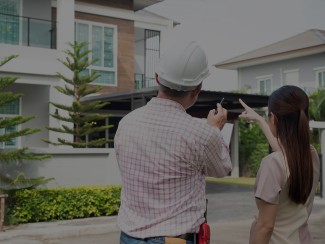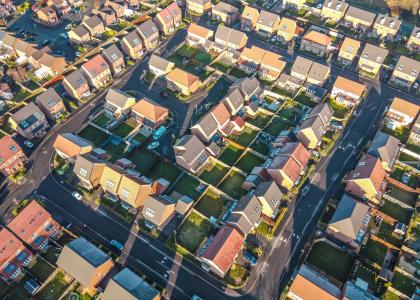Download the report
Executive Summary
Key Findings
|
Comprehensive energy retrofits—that is, renovations designed to achieve at least a 20% reduction in household energy consumption—deliver substantially higher energy savings compared to smaller energy efficiency improvements. Hence, encouraging homeowners to go beyond minor upgrades to comprehensive-level retrofits is now an important goal of state energy offices, energy efficiency program administrators, and the federal government. However, stepping up energy retrofits has always been a challenge for energy programs, and promoting comprehensive upgrades is even more difficult.
Financial incentives, such as those provided through the Inflation Reduction Act (IRA), reduce costs and are a critical tool for increasing residential energy upgrades. However, they may fall short if not complemented by behavioral-informed messaging strategies and program design elements that maximize the impact of these incentives. This report offers actionable recommendations for how good programs can be made great with a few small tweaks in how they are put together and presented. We draw on existing research, expert interviews, and our own online survey to answer key research questions posed by state energy offices and program administrators.
Taken together, our results suggest that comprehensive retrofits are a tough sell, but recommending the right package to the right people at the right time can help significantly. Even after existing rebates and credits are included, the costs of upgrading are out of reach for many homeowners. Although nearly two-thirds of our sample (65%) reported a willingness to spend at least $1,000 on upgrades, that still left a large minority unable to do comprehensive retrofits. IRA provisions offer augmented rebates for low-income homeowners, but non-low-income homeowners (especially those close to the low-income threshold) receive fewer incentives and often remain unable to upgrade. Our experiment on perceptions of financial incentives showed that solutions such as no-interest loans with no money upfront significantly increased willingness to invest in comprehensive upgrades.
Moreover, our experiment on using the foot-in-the-door technique to upsell clients who may not initially request comprehensive upgrades showed that customers who agreed to one type of efficiency upgrade were often interested in additional efficiency upgrades. However, to do this type of upselling, contractors must be able to offer a variety of upgrades of different types (heating and cooling, insulation, hot water, windows, etc.) through one point of contact and at one point of sale. This type of general contractor business model for efficiency improvements is relatively rare. It also requires that contractors be intimately familiar with available rebates, tax credits, and financing options in their regions (which is uncommon) and have the ability to maximize those options through creative solutions. For example, in one of our experimental scenarios, the contractor suggested staggering projects to reduce costs and take advantage of credits and incentives year over year.
Creating upgrade packages that appeal to specific demographics may also help. In general, our discrete choice experiment demonstrated that comprehensive packages that included efficient water heating, heating/cooling, and appliance upgrades were selected significantly more frequently than those without. Packages featuring windows upgrades, rooftop solar installation, or Level 2 electric vehicle (EV) charger installation were selected significantly less frequently. Nevertheless, windows and solar may be attractive as individual upgrades, and some homeowners in our sample (about 17% of interested homeowners) were moved by EV charging and rooftop solar being included in upgrade packages. Window upgrades, in particular, are less applicable to most homes and, therefore, will be important to a select group but may not be chosen by most homeowners. This shows why listening to customers and being able to address their particular home energy interests and concerns (even when they might involve non-efficiency improvements) can lead to more upgrades.
Marketing and outreach efforts should also respond to homeowner barriers and drivers of upgrading. As identified in previous research (e.g., Sussman and Chikumbo 2017), total costs, projected savings, and comfort were of primary importance to nearly everyone in our sample (with health being the fourth-most important). That said, our segmentation study showed that other factors, such as interest in new smart technology, can differentiate some groups from others in subtle ways that can be used to better tailor campaigns.
Our experiment on energy upgrade trigger points showed that approaching customers after key events, such as the need to replace an HVAC system, or after buying a new house, significantly improved the chances that they would agree to install a heat pump heating and cooling system. Approaching after an HVAC-related trigger that was small (annual maintenance) or after a large home remodeling project that was unrelated to HVAC (e.g., kitchen remodeling) did not significantly increase the likelihood of upgrading.
Our report provides several proofs-of-concept of what could work to improve comprehensive upgrade efforts using behavioral science. The time to test these in the field is now. Unprecedented financial incentives offered through IRA provisions, with tax incentives starting in 2023 and rebates in 2024, can enable U.S. state energy offices and energy efficiency program administrators to make giant leaps in improving existing buildings. We hope this report will help them make the most of these opportunities.
| Suggested Citation |
Sussman, Reuven, Grace Lewallen, and Steven Conrad. 2024. Messaging Comprehensive Retrofits. Washington, DC: ACEEE. www.aceee.org/research-report/b2403. |




